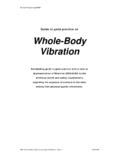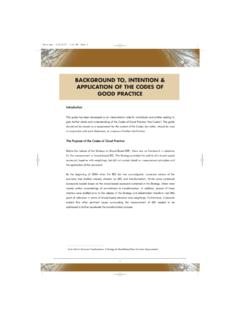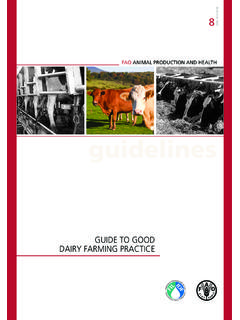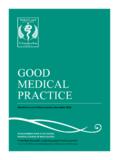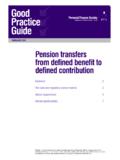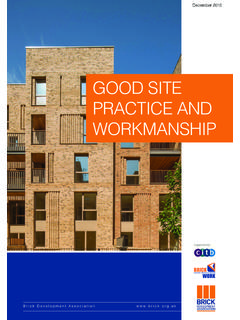Transcription of Environmental good practice guide for ground …
1 Title here in 8pt Arial (change text colour to black) i Environmental good practice guide for ground source heating and cooling GEHO0311 BTPA-E-E ii Environment Agency: Environmental good practice guide for ground source heating and cooling Vsn 3 We are The Environment Agency. It's our job to look after your environment and make it a better place for you, and for future generations. Your environment is the air you breathe, the water you drink and the ground you walk on. Working with business, Government and society as a whole, we are making your environment cleaner and healthier. The Environment Agency. Out there, making your environment a better place. To contact us: Call: 08708 506 506 (Mon-Fri 8-6) Email: Website: Published by: Environment Agency Horizon House, Deanery Road Bristol BS1 5AH Tel: 0117 934 4000 Email: Environment Agency All rights reserved.
2 This document may be reproduced with prior permission of the Environment Agency. Further copies of this report are available from our publications catalogue: or our National Customer Contact Centre: T: 08708 506506 E: Environment Agency: Environmental good practice guide for ground source heating and cooling iii Contents 1 Introduction 1 Using this guide 1 Types of scheme 1 Environmental risks of GSHC schemes and your role 4 2 General requirements for GSHC schemes 5 Assessment of Environmental impacts 5 Environmental risks related to scheme location 5 General good practice for excavations and drilling 8 good practice for borehole completion 11 Decommissioning 12 3 good practice guidance closed loop schemes 13 Our approach to closed loop schemes 13 Liability for pollution from closed loop schemes 13 Horizontal
3 Closed loop schemes 14 good practice for pollution prevention 14 Loop construction and pressure testing of indirect closed loop schemes 16 Thermal transfer fluid 17 Direct circulation (DX) closed loop installations 18 Post installation care and maintenance 18 4 Open loop schemes 19 Introduction 19 General well construction and operation principles 20 Groundwater investigation consent and abstraction licence 21 Discharge of water from your scheme 23 Open loop schemes and contaminated water 25 Recharge well hydraulic impacts 26 Pumping of particulate matter 26 5 Further information 27 6 References 28 7 Abbreviations 30 8 Glossary
4 31 Appendix A1 best practice checklist 33 iv Environment Agency: Environmental good practice guide for ground source heating and cooling Vsn 3 Table Summary of current permit requirements for different types of water source heating and cooling schemes - closed loop 3 Table Summary of current permit requirements for different types of water source heating and cooling schemes - open loop 3 Table Site checklist 5 Table Geological checklist 9 Table Detailed approach to permitting of discharges 24 Figure Schematic of open loop GSHC scheme where groundwater is used for heating 2 Figure Schematic of horizontal closed loop and vertical closed loop GSHC scheme 2 Figure The risk associated with drilling in contaminated ground or groundwater shown in a closed loop system installed in an aquifer (in this case a sandstone)
5 , but the same concerns would apply to an open loop system 8 Figure The risks associated with drilling in a multiple aquifer situation. A closed loop system installed through several aquitards (such as clay) and aquifer (such as limestone, sandstone or sand/gravel) horizons 11 Figure Current regulatory pathway for open loop GSHC systems (modified after Fry, 2009), showing the separate permitting systems required for different stages 1 1 Introduction ground source heating and cooling (GSHC) systems use energy stored in the ground to heat or cool buildings. They can also provide hot water. Electricity, and sometimes other sources such as gas, is used to power the heat pumps and they can typically provide three to four times the amount of energy used to drive the system, depending on their design.
6 Using this guide This Environmental good practice guide (EGPG) is for designers, developers, installers, drillers and owners of GSHC schemes. It sets out what needs to be done to comply with Environmental legislation and manage Environmental risks. Following the guide will help you to meet your legal requirements and reduce the risk that your scheme causes Environmental harm. It is in your interest to avoid Environmental harm as it can lead to legal action, including by third parties claiming damages. It could also damage your reputation and that of the industry. This EGPG is not intended to provide guidance on health and safety or designing thermally efficient or cost-effective systems as such guidance can be sought elsewhere (see section 5 for links to sources of further information). We expect operators of GSHC schemes to install, manage and decommission all GSHC schemes carefully following this EGPG and to adhere to the conditions we set.
7 This section sets out the types of GSHC scheme and highlights possible Environmental impacts and legislation for all types of GSHC scheme. Section 2 details good practice and legislative requirements for both open and closed loop systems in terms of location, excavation and drilling. For those planning to install a closed loop GSHC scheme, section 3 details good practice for pollution prevention and installation of your scheme. For those planning to install an open loop scheme, section 4 details the good practice and the statutory requirements for the environment for this type of scheme. Appendix A1 contains a summary of what to consider ensuring protection of the environment. Types of scheme This guide deals with the two main types of GSHC system: closed loop and open loop. In open loop systems, water is abstracted from the ground and pumped through a heat exchanger and then it is normally pumped back into the ground (see figure ).
8 Where the same volume of water is returned to the same aquifer the scheme is classed as non-consumptive and does not affect the water resource. Some schemes which use the water for other purposes or discharge into a sewer or surface water are classed as consumptive. 2 Environment Agency: Environmental good practice guide for ground source heating and cooling Vsn 3 Figure Schematic of open loop GSHC scheme where groundwater is used for heating. Closed loop systems consist of a closed pipe system buried in the ground and filled with thermal transfer fluid (which comprises anti-freeze, biocide, corrosion and scale inhibitors). When the liquid travels around the pipe loops, it absorbs heat from, or gives heat out to the ground (see figure ). Figure Schematic of horizontal closed loop and vertical closed loop GSHC scheme In addition to ground source schemes, there are also water source heating and cooling schemes.
9 These may be closed loop in rivers, lakes and ponds or may be open loop Heat pump Pump GROUNDWATER Heat pump Heat pump Water table 3 and abstract water directly from (and discharge water to), rivers, lakes, ponds or even the sea. Some schemes may be a hybrid of these types where water may be abstracted from the groundwater and returned, for example, to rivers. This guide covers both the groundwater abstraction and discharge. It does not cover surface water abstraction and discharge. For more information and detail on regulation of surface water abstraction and discharge, see table and the web links in the table. GSHC schemes should be distinguished from deeper geothermal schemes (several kilometres deep) which use the earth s internal heat, which increases with depth. In contrast GSHC schemes use the stable temperatures of the ground and groundwater, at much shallower depths.
10 This document solely considers GSHC schemes and not deep geothermal schemes. A summary of Environmental permissions for different types of schemes are detailed in the table and More details can be found in section 4. Tables and Summary of current permit requirement for different types of water source heating and cooling schemes Installation in ground Surface water Closed loop No permit needed Flood defence consent may be needed in rivers. Contact us for more information1 Abstraction from Discharge to Groundwater Surface water Groundwater Surface water Open loop See section 4 for details. Consent to investigate groundwater, and an abstraction licence required for abstractions over 20 cubic metres per day Abstraction licence required for abstractions over 20 cubic metres per day, apply as any other abstraction licence, see our website See section 4.

